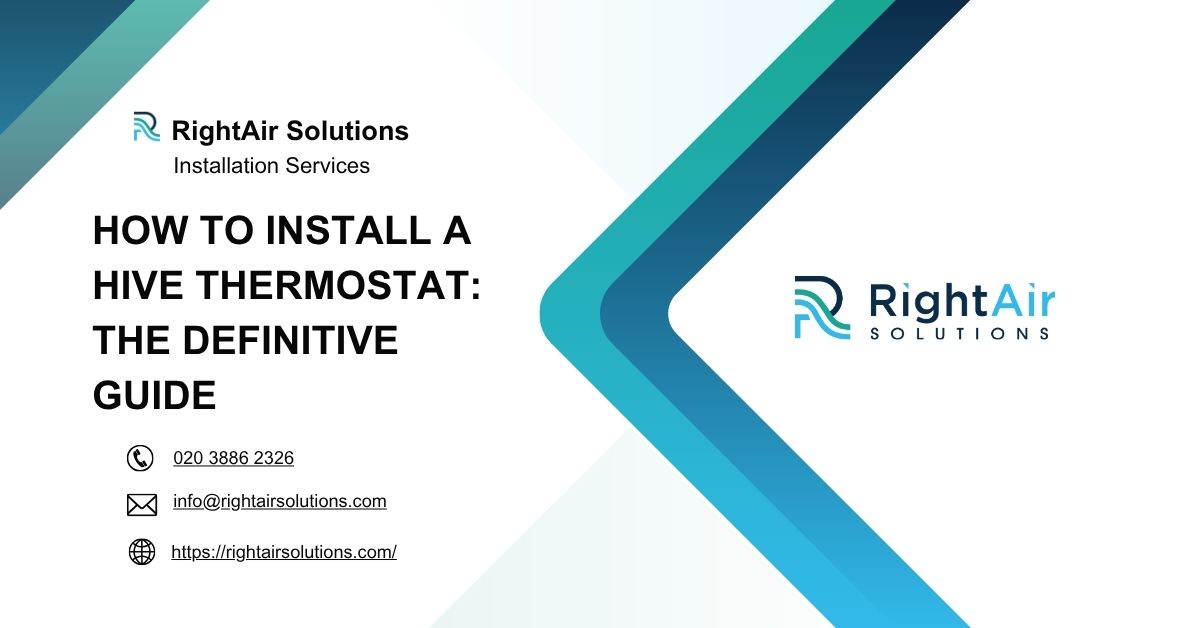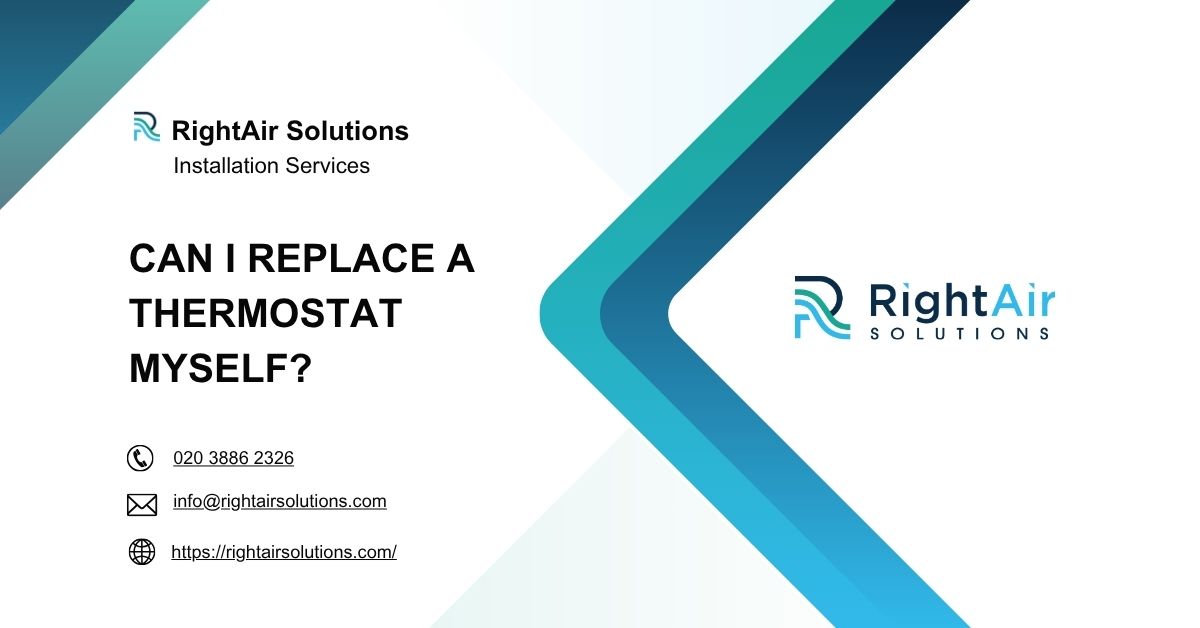
Can I Use Hive Thermostat Without a Subscription?
Still using Hive without Hive Plus? Learn what you get for free, what you lose and how to make the smartest heating choice for your home.
RightAir Solutions is a company that specialises in commercial air conditioning services.
The best air conditioning system for your property depends on your space size, usage, local climate, and how much you want to spend running and maintaining it. Some systems cool better in open plan homes, others are more suitable for small flats or places without ductwork. If you’re in the UK, where the summers are mild but increasingly humid, energy efficiency and heating options are just as important as cooling. Whether it’s a mini split system, central air, or a ground source heat pump, the right system will suit your comfort needs and how you live.
More UK homes now have air conditioning. Warmer summers, improved insulation and homeworking mean indoor temperature control is something many people want, especially in southern England and urban areas. It is not just about staying cool in summer. People want reliable indoor comfort and cleaner air across the year.
Pro Tip:Prioritise Maintenance Contracts – Systems that are regularly serviced run more efficiently, last longer, and keep indoor air cleaner. Always ask your installer about annual plans and filter replacements.
Higher energy prices have made homeowners more aware of running costs. Newer systems are far more efficient. You can now find units that heat, cool, filter air and connect to mobile apps. These features suit most homes and offices in the UK, whether modern or traditional.
Ductless systems use one or more indoor air handlers and an outdoor compressor. These are common in homes without ductwork. Each room can be set to a different temperature. They run quietly and are energy efficient, making them ideal for retrofitting.
A central system uses air ducts to move cool air from one main unit across the house. This system is best for large properties with existing ductwork or those planning a new build. It gives consistent cooling and can be combined with heating and ventilation.
Portable air conditioners are standalone units with wheels. They plug into the mains and vent hot air through a window. They are useful in rented homes or as a short term solution.
Things to keep in mind
These units fit into a window opening and contain all components in one box. UK homes rarely use them due to window design and planning rules. They are more common in commercial setups.
Hybrid systems mix an electric heat pump with a gas boiler. This gives flexibility depending on outside temperatures and fuel prices. These are not yet common in the UK but can reduce carbon and heating bills.
These systems use pipes buried in the ground to absorb or release heat. Known as ground source heat pumps, they offer heating and cooling. Installation requires outside space but running costs are low and government grants are available.
Air cooled systems are the most common and use fans to remove heat. Water cooled systems transfer heat to water pipes and do not need an outside condenser unit. These are popular in flats and buildings where outside access is limited.
The layout and design of your home or business space influences which system will work best. Some systems need ducts or outside walls while others can be fitted into compact flats or listed buildings.
Pro Tip: Match System Size to Room Needs – Oversizing your air conditioning unit won’t improve comfort—it will increase humidity and raise energy costs. Use a professional BTU calculation for better results.
For single room cooling or flats without outdoor unit access, water cooled split units or portable air conditioners are common choices. These are easier to install and do not change the outside of the building. Portable units can also be useful if you’re renting and need flexibility.
If you’re unsure whether your system is inverter-based, contact RightAir Solutions for a system check or quote on upgrading to an energy-saving model. Reach out now for expert Maintenance Tips.
Ducted systems or multi split air conditioners are well suited to detached houses and multi room layouts. These offer centralised control or individual room zones, improving comfort and energy use. Larger homes may benefit from linking air conditioning to a heat recovery system.
Shops, offices and salons often use cassette or ducted systems. These cool larger areas quickly and can work with existing ventilation. Business owners often ask about installation time and service contracts. We always recommend systems that can be maintained easily with reliable UK-based manufacturer support.
If you’re still deciding, you can read more about RightAir’s full air conditioning services including installation, maintenance and free system advice at RightAir’s Air Conditioning Services.
The UK’s climate varies across regions but most areas experience mild to warm summers and wet winters. A system that performs well across a range of temperatures while maintaining low energy use is important for most homeowners.
Larger systems benefit from energy audits. These can highlight wasted energy, suggest upgrades, and help businesses adopt smart zoning and timed controls that reduce unnecessary cooling.
At RightAir Solutions, we guide homeowners through system selection, installation, and optimisation to ensure cost savings and performance all year round.
For homes in the south and Midlands where summer heat can last several weeks, mini split systems are an excellent option. These provide efficient cooling and are easy to control room by room. For larger homes, ducted systems with variable speed compressors maintain comfort with less energy use.
Some systems handle humidity better than others. Models with built-in dehumidification modes help improve indoor comfort. Air conditioning systems with inverter compressors also respond more smoothly to fluctuating indoor heat and moisture levels, helping maintain a balanced indoor climate.
If your system also provides heating, look for models with a strong COP rating. This coefficient of performance tells you how much heat a system delivers per unit of energy used. Heat pump systems, especially those using inverter technology, tend to have high COP values, making them efficient even when temperatures fall.
When comparing air conditioning units, efficiency ratings help you work out long term energy costs and cooling performance. In the UK, these figures are becoming more important as people look for value and lower carbon impact.
This measures a system’s overall cooling efficiency across a typical summer season. The higher the SEER rating, the more efficient the system. A SEER of 16 or higher is considered very efficient for UK homes.
EER looks at efficiency under specific test conditions. It’s useful when comparing two units side by side. A higher EER means lower running costs when temperatures are consistently warm.
COP measures how effectively a heat pump provides heating. If a system has a COP of 4, it gives four units of heat for every one unit of electricity. The higher the COP, the better it performs in colder months.
Choosing a system with high SEER, EER and COP ratings means more comfort with lower bills. It also supports energy goals for those aiming for better EPC scores or looking to reduce household emissions.
New systems often include smart features that help you control energy use and comfort more easily. These upgrades are not just for convenience. They also help cut down on running costs and improve indoor air quality.
Inverter compressors adjust the speed of the cooling cycle to match the temperature in the room. This reduces energy use and avoids sudden spikes in electricity. Inverter driven systems are quieter and offer more stable indoor temperatures, especially useful in shared family spaces or bedrooms.
Many air conditioning units now come with built-in Wi-Fi. You can adjust temperature settings using your phone or connect the unit to a home automation system. Some models also support voice control using smart speakers.
A programmable thermostat lets you set the temperature to change automatically at different times of day. This helps you reduce energy use when the space is not occupied and keeps the home comfortable when you return.
Modern units often include multi-stage filters, ionisation and even UV light to remove airborne particles. These features can help reduce allergens, dust and bacteria, improving indoor air quality for those with asthma or allergies.
Sizing an air conditioning unit correctly ensures your space stays cool without wasting energy. A unit that is too small will not cool the room effectively. One that is too large may cool the air but leave humidity levels too high.
Cooling capacity is measured in BTUs. A simple guide is to multiply the length and width of the room in feet and then multiply by 25. For example, a room 15 feet by 12 feet would need about 4500 BTUs. This gives you a rough estimate.
Ceiling height, number of windows, insulation type, how much sunlight enters the room, and how many people use the space all make a difference. Rooms with kitchen appliances or home office equipment often need more cooling power.
While online calculators are helpful, a qualified air conditioning installer can provide a more accurate assessment. At RightAir Solutions, we take all relevant factors into account and offer a personalised recommendation based on your actual room layout and usage.
If you’re planning to install a new system, check our free quote and sizing service through the RightAir Contact Page.
The total cost of an air conditioning system depends on the unit, the number of rooms being cooled, and how complex the installation is. You also need to consider ongoing costs like maintenance and energy use.
Systems with high SEER or EER ratings cost less to run. A modern mini split system might use 500 to 700 watts per hour, meaning about 15 to 20 pence per hour of use depending on your tariff. Water cooled units may be more efficient in some flats due to reduced heat loss.
We recommend annual servicing to keep your system efficient and clean. Filters should be checked regularly. Servicing costs typically range from £80 to £150 per visit. RightAir offers servicing plans to help you spread the cost and stay compliant with manufacturer warranties.
Modern air conditioning systems help improve indoor air by filtering out dust, pollen, and bacteria. Systems with HEPA filters, activated carbon or ionisation can significantly reduce pollutants, which is especially helpful for those with asthma or hay fever. Some units also manage humidity, which prevents mould growth and helps maintain comfortable indoor air.
Choosing a system with a low GWP (Global Warming Potential) refrigerant can reduce your environmental footprint. Older systems used R22, which has been phased out due to its high environmental impact. Today, many units use R32 or R290, which are more efficient and better for the environment.
Air conditioning systems that run on electricity can be powered by renewable sources, especially if you have solar panels. Ground and air source heat pumps are also eligible for government grants and contribute positively to your home’s energy performance rating.
Not all air conditioning systems are the same. Some brands offer better reliability, warranties and aftercare support than others. In the UK, the following manufacturers are widely trusted for residential and light commercial installations:
Mitsubishi is known for energy efficient models with low noise levels. They also offer advanced air purification features and excellent smart control systems.
Daikin provides high end units with strong performance in both cooling and heating. Their split systems are among the most popular in the UK market.
Both brands offer good reliability and competitive pricing. They have a strong installer network and are suitable for single room and multi room applications.
Known for stylish indoor units and good value for money, especially in modern homes. LG systems often feature smart app integration as standard.
When choosing a brand, also consider installer support and parts availability in your region. It’s always best to work with an installer like RightAir that offers brand neutral advice to help match you with the right product.
There is no one-size-fits-all answer, but if you’re looking for control, comfort and energy savings, ductless mini split systems or hybrid heat pumps are worth serious consideration. For listed buildings or flats, water cooled internal units may be the better option.
For more help selecting the best air conditioning solution, speak to our team at RightAir Solutions. We offer impartial advice, free sizing consultations and expert installation throughout the UK.
Visit RightAir’s Air Conditioning Services to explore system options or Contact Us for a quote today or free Air Conditioning Advice.

Can I Use Hive Thermostat Without a Subscription?
Still using Hive without Hive Plus? Learn what you get for free, what you lose and how to make the smartest heating choice for your home.

How To Install A Hive Thermostat: The Definitive Guide
Installing a Hive Thermostat? Learn how to do it safely and easily while avoiding the most common mistakes that cost homeowners time and money.

Can I Replace a Thermostat Myself?
Thinking of swapping your thermostat? Find out if it’s safe, legal, and worth doing yourself before you reach for your screwdriver.
RightAir Solutions

At RightAir Solutions, we provide air conditioning services to domestic and business customers for heating and cooling units. We also supply and fit commercial AC and HVAC services with our insured, qualified and experienced London team of air con engineers.